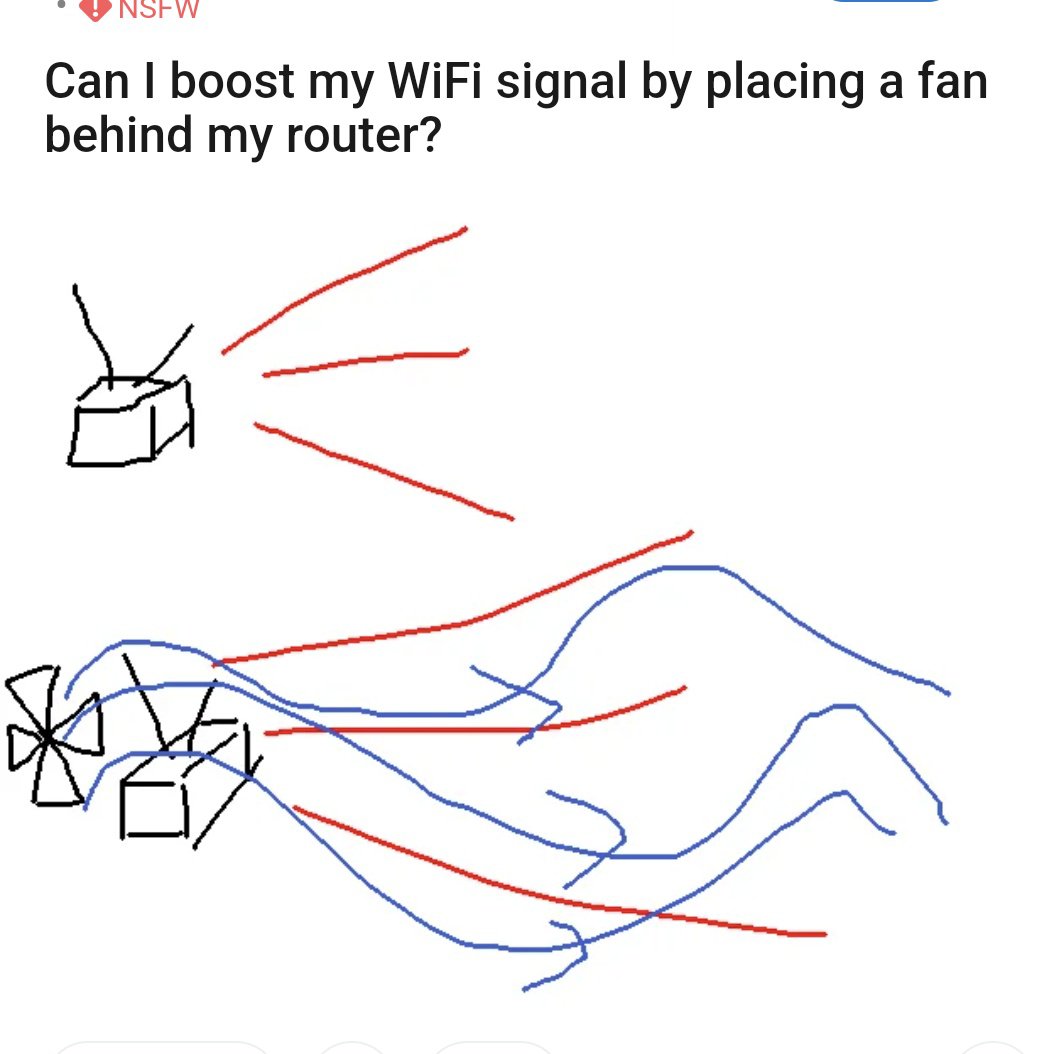this post was submitted on 12 Sep 2023
1258 points (97.7% liked)
Memes
45731 readers
710 users here now
Rules:
- Be civil and nice.
- Try not to excessively repost, as a rule of thumb, wait at least 2 months to do it if you have to.
founded 5 years ago
MODERATORS
you are viewing a single comment's thread
view the rest of the comments
view the rest of the comments

How would this work? Doesn't each router broadcast its own signal? Wouldn't they interfere?
The poster is being sarcastic.
In all seriousness, you can have two completely independent routers operating on different channels that don't interfere. This is how large wireless systems work. A large number of wireless access points (same basic premise as a wireless router, but with more wireless features and fewer router features), each will operate on their own frequency that won't interfere with it's neighboring access points. There's a limit to how far this goes, since there's only so many non-overlapping wireless frequencies....
The idea is to move the access points into places that are far enough apart that when you run out of non-overlapping frequencies, you can re-use a frequency that's been used, but is in use far enough away that it won't interfere.
The idea that adding more radios will boost your signal.... that's valid, but the radios need to be very carefully managed to ensure that everything is working in a way where that goal is achieved. This is the foundation of how beamforming works. Each wireless interface is a set of radios; you'll see this advertised as something along the lines of 3x3 or 2x2, on spec sheets. More is better, but both sender and reciever needs the same number to get the full effect. Most cell phones and laptops are 1x1 or 2x2.... how this makes beamforming happen is that one will transmit slightly before the other, and because of the difference in their placement the two signals create what's called "constructive interference" and they effectively combine into a stronger signal.
The big trick to get all this working with wifi, is that all the radios are effectively on the same chip. They're about as closely bonded as they can be. Trying to do this with two different radios in two different devices is nigh impossible. It's certainly impractical.